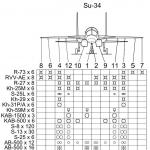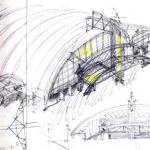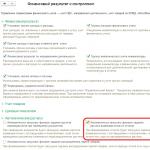Tasks and features of the work of a slinger. Tasks and features of the work of a slinger Qualification requirements for a slinger of the 2nd category
§ 302. Slinger 2nd category
Characteristics of work
- Slinging and lashing of simple products, parts, timber (up to 3 m long) and other similar loads weighing up to 5 tons for lifting, moving and stacking.
- Unhooking slings at the installation or stowage site.
- Giving signals to the crane operator (crane operator) and monitoring the load during lifting, moving and laying.
- Selecting the necessary slings in accordance with the weight and size of the load being moved.
- Determining the suitability of slings.
Must know:
- visual determination of the mass of the transported cargo;
- places for securing standard products;
- rules for slinging, lifting and moving small cargo;
- conditional alarm for crane operators (crane operators);
- purpose and rules of use of slings - cables, chains, ropes, etc.;
- maximum load standards for the crane and slings;
- the required length and diameter of slings for moving loads;
- permissible loads of slings and ropes.
§ 303. Slinger 3rd category
Characteristics of work
- Slinging and lashing of simple products, parts, timber (up to 3 m long) and other similar loads weighing over 5 to 25 tons for lifting, moving and stacking.
- Slinging and tying of moderately complex loads, timber loads (over 3 to 6 m in length), products, parts and assemblies with their installation on a machine, scaffolding and other mounting devices and mechanisms, as well as other similar loads weighing up to 5 tons for lifting them, moving and laying.
- A selection of methods for quickly and safely slinging and moving loads in various conditions.
- Splicing and tying slings with different knots.
Must know:
- visual determination of the mass and center of gravity of transported goods;
- rules for slinging, lifting and moving simple heavy loads and moderately complex loads;
- the most convenient places for slinging cargo;
- service life of slings, their load capacity, testing methods and timing;
- methods of splicing and tying slings;
- principle of operation of load-handling devices.
§ 304. Slinger 4th category
Characteristics of work
- Slinging and lashing of simple products, parts, timber (up to 3 m long) and other similar loads weighing over 25 tons for lifting, moving and stacking.
- Slinging and tying of moderately complex loads, timber loads (over 3 to 6 m in length), products, parts and assemblies with their installation on a machine, scaffolding and other mounting devices and mechanisms, as well as similar loads weighing over 5 to 25 tons for lifting them , moving and laying.
- Slinging and tying of timber cargo (over 6 m in length), products, parts and assemblies that require increased caution, technological equipment and related structures, products, units, machines and mechanisms directly during slipway and sectional assembly and disassembly, as well as during assembly and disassembly of machines, apparatus, structures of prefabricated elements of buildings and structures and similar complex loads weighing up to 5 tons for lifting them, installation, movement and stacking.
- Braiding the ends of the slings.
- Selection of slings in accordance with the weight and type of cargo.
Must know:
- methods of slinging heavy loads;
- arrangement of load-handling devices used when lifting and moving loads to protect them from deflection and damage;
- rules and methods for splicing slings;
- service life of slings and their load capacity.
§ 305. Slinger 5th category
Characteristics of work
- Slinging and tying of moderately complex loads, timber (over 3 to 6 m in length), products, parts and assemblies with their installation on a machine, scaffolding and other mounting devices and mechanisms, as well as similar loads weighing over 25 tons for lifting, moving and styling
- Slinging and tying of timber cargo (over 6 m in length), especially critical products, machine components and mechanisms directly during slipway and sectional assembly and disassembly, as well as during assembly and disassembly of machines, apparatus, structures of prefabricated elements of buildings and structures and similar complex loads of mass over 5 to 50 tons for lifting, moving and laying.
Must know:
- designs of devices used when lifting and moving loads to protect them from deflection and damage;
- methods and timing of testing slings.
§ 306. Slinger 6th category
Characteristics of work
- Slinging and tying of complex timber cargo (over 6 m in length), especially critical products, components, machines and mechanisms directly during slipway and sectional assembly and disassembly, as well as during assembly and disassembly of machines, apparatus, structures of prefabricated elements of buildings and structures and similar complex loads weighing over 50 tons for their lifting, installation, movement and stacking.
Must know:
- rules and methods for slinging especially critical cargo;
- design of devices used when lifting and moving critical loads to protect them from damage and deflection.
JOB DESCRIPTION FOR 2nd RATE SLANDER
I. General provisions
- A 2nd category slinger belongs to the category of workers and is directly subordinate to _______________________.
- A person with special skills is accepted for the position of slinger of the 2nd category, without presenting requirements for work experience.
- A person with a special qualification is appointed to the position of plastics welder of the 2nd category professional education without any work experience requirements.
- A slinger of the 2nd category is hired and dismissed from work by order ___________________________.
- A 2nd category slinger must know:
- visual determination of the mass of the transported cargo;
- places for securing standard products;
- rules for slinging, lifting and moving small-sized cargo;
- conditional alarm for crane operators (crane operators);
- purpose and rules of use of slings, cables, chains, ropes, etc.;
- maximum load standards for the crane and slings;
- the required length and diameter of slings for moving loads;
- permissible loads of slings and ropes. - _________________________________________________________________.
II. Job responsibilities
- Slinging and lashing of simple products, parts, timber (up to 3 m long) and other similar loads weighing up to 5 tons for lifting, moving and stacking.
- Molding of slings at the installation or laying site. Giving signals to the crane operator (crane operator) and monitoring the load during lifting, moving and laying.
- Selecting the necessary slings in accordance with the weight and size of the load being moved.
- Determining the suitability of slings.
- _________________________________________________________________.
- _________________________________________________________________.
III. Rights
A slinger of the 2nd category has the right:
- For all social guarantees provided for by law.
- Require the management of the enterprise to provide assistance in fulfilling its professional responsibilities and exercise of rights.
- Demand the creation of conditions for the performance of professional duties, including the provision necessary equipment, equipment, workplace that complies with sanitary and hygienic rules and regulations, etc.
- For additional vacation and reduced working hours.
- To receive special clothing, special shoes and other personal protective equipment.
- Payment of additional expenses for medical, social and professional rehabilitation in cases of health damage due to an industrial accident and occupational disease.
- Get acquainted with the draft decisions of the enterprise management concerning its activities.
- Submit proposals for improvement of the organization and methods of work performed by the enterprise management for consideration.
- Request personally or on behalf of your immediate supervisor documents, materials, tools, etc., necessary to perform your job duties.
- Improve your professional qualifications.
- Other rights provided for by labor legislation.
- _________________________________________________________________.
- _________________________________________________________________.
IV. Responsibility
A 2nd category slinger is responsible for:
- Failure to perform or improper performance of one’s official duties under this job description- within the limits determined by the current labor legislation of Ukraine.
- Causing material damage- within the limits determined by the current labor and civil legislation of Ukraine.
- Offenses committed in the course of carrying out their activities - within the limits determined by the current administrative, criminal, and civil legislation of Ukraine.
- _________________________________________________________________.
- _________________________________________________________________.
At factories, enterprises, construction sites, in the field of transport services, wherever moving, loading, unloading of large cargo occurs, slingers are needed. They help perform operations with cargo that equipment cannot carry out on its own.
Slinger - who is he?
Slingers attach the load to slings - ropes or steel ropes, using loops or hooks located on them, or by tying. Next, the slings are put on the hook of a crane or other lifting mechanism. The slinger also helps the driver operating the equipment, who must receive a signal about the moment the load is secured and the possibility of further manipulation with it.
Responsibilities of the profession
From the moment the hook is lowered to the attachment point to the final point of cargo movement, a whole chain of actions takes place, on the professional execution of which not only the safety of material assets, but also human life depends. The slinger must be able to:

- Prepare the area for unloading. The place must be cleaned, covered with pallets if necessary, and the geometry of container placement must be planned.
- Check the cargo. This includes determining the mass for selecting the necessary slings, the reliability of fastening loops regarding concrete structures, the integrity of the packaging and pallet.
- Select material for fixation. Select chains, ropes or cables according to suitability for the purpose of the work and quality.
- Secure the slings correctly. They should not be twisted, have a destructive effect on the load, or be able to slip off or break.
- Help in correcting the actions of a crane operator or lifting equipment operator when moving cargo. To do this, the slinger must know the warning sign system.
- Perform correct and safe uncoupling.
Categories of ranks
There are five categories of slingers, from 2 to 6. Each of them is assigned to a specialist with a certain level of knowledge and skills. The highest - 6th category, representing the most qualified employees, has the highest wage tariff. This does not mean that the 2nd category of profession is less in demand.
For enterprises working with small, uncomplicated loads, it is more profitable to hire a low-category slinger who will also do his job efficiently.
Requirements for categories
Responsibilities of slingers of the 2nd category:

- Attaching to slings, tying simple loads up to 5 tons, as well as scaffolding no more than 3 meters long;
- Escort, control of cargo during movement, its stowage;
- Unhooking the slings after lowering the weight;
- Interaction with the crane operator using special signals;
- Control of sling expiration dates.
Required basic knowledge of the profession:
- Determining the mass of the load by eye;
- Calculation of attachment points to slings;
- Algorithm of actions during slinging;
- What slings, where to use (ropes, cables, chains);
- Calculation of the load on the sling, crane boom.
- Safety precautions at hazardous enterprises.
- Providing first aid.
Responsibilities of 3rd category specialists to all of the above, plus:

- Tolerance for masses from 5 to 25 tons;
- Operations with timber up to 6 meters long;
- Cargo splicing using knotting method;
- Loading heavy loads onto machinery and scaffolding.
Additional information you need to know:
- How to calculate the center of gravity;
- Rules for stowing medium-complex cargo;
- The specifics of the functioning of gripping mechanisms;
- Methods of fastening slings and transportation in different conditions.
Responsibilities of slingers of the 4th category professions are complemented by work:
- With masses of more than 25 tons;
- The length of the forest is over 6 meters;
- Cargoes that require careful handling.

IN responsibilities of 5th category specialists In addition to all of the above, it includes:
- Complete organization of the technical process for loading, unloading and moving;
- Handling complex loads up to 50 tons;
- Skills in handling crane equipment and other similar equipment.

IN responsibilities of specialists of the 6th category includes a complete list of all knowledge and skills, plus access to masses over 50 tons.

Subtleties of the profession
The profession of a slinger is not an easy one. In addition to the knowledge that needs to be acquired, not every person can provide services in this area due to inadequacy of physical data. From this point of view, the qualities that a specialist must have are the following:

- Physical strength. Chains, cables are heavy equipment. They need to be lifted, secured, and held in weight.
- Excellent eye. The slinger needs to be able to approximately accurately determine the mass of the load; calculation in any other way is not always available.
- Coordination of movements. It is necessary to secure weights when climbing onto platforms, buildings, and other structures - the plane of movement can be cluttered with various objects.
- Communication skills. The slinger must constantly communicate with the operators of lifting devices and with other slingers to constantly transmit data on the condition of the load strapping.
- Fast response. A professional must be able to make decisions quickly. Working with large tonnage is dangerous. There may be unforeseen situations.
- Responsibility, attentiveness. Mistakes by a professional employee often lead to irreparable consequences.
How slingers are trained and certified
There are two ways to become a slinger: in special training centers and remotely. The more extensive the training course is, the higher the rank of slinger a person wants to receive. The program has the following content:

- Information about crane installations: classification, design and operational safety, indexing, parameters.
- Safety equipment.
- Load-handling devices, containers.
- Securing the ends of steel cables using basic methods.
- Criteria for rejecting containers and accessories during inspection.
- Skills in organizing safe operations using cranes.
- Carrying out work using crane equipment.
- Types of loads, slinging in various ways.
- Skills in unloading, loading and storing cargo.
- Organization of work sites with loading equipment.
- Installation and construction works.
- General safety rules and safety when working in an enterprise.
- Basics of first aid.
Certification for a specialty involves passing exams upon completion of the material. Based on the results, a certificate of a professional specialist and a commission protocol for participants who have passed certification are issued.
Below are the types of work and job responsibilities slingers depending on the assigned rank. We remind you that you can undergo primary training, as well as advanced training for the specified categories, at training center"PromResource".
Slinger of the second category (2nd category).
Description of the work performed.
The responsibilities of a worker in the slinger profession include transportation, movement and subsequent stacking of cargo. Tying and slinging various cargoes having a mass of up to 5 tons, simple products, timber cargo, the length of which reaches 3 m. Carrying out the process of unhooking slings in the place required for laying and installation. Interact with the crane operator by giving the necessary signals, unless otherwise provided, and observing this load while it is being lifted or laid down. Monitor deadlines for suitability.
Required knowledge.
To confirm the professional skills of a 2nd category slinger, it is necessary to have skills in visually determining the weight of the load at the time of movement. Identify places where typical load must be strapped. The slinger must know the slinging algorithm, highlight the purpose and use of slings (chains, cables, ropes). Monitor the permissible loads of slings, cables and cranes. You need to take into account the length and diameter of the slings for moving loads.
Slinger of the third category (3rd category).
Description of the work performed.
Slinging cargo of various formats, weighing from 5 to 25 tons, to move them around the site. Slinging cargo of medium complexity, cargo of forest products from 3 to 6 m. Lifting, stacking and moving cargo up to 5 tons for further placement of its machine, scaffolding and other professional mechanisms. Rapid determination of methods for slinging and transporting goods in different conditions in accordance with existing safety regulations. Use in work the skills of tying cargo with different knots in the right places and merging them.
Required knowledge.
The ability to visually determine the center of gravity and mass of cargo in the transportation area. Follow the rules for safe slinging and stowing simple heavy objects and moderately complex loads. Identify the right places for the correct slinging of the required cargo. Monitor the terms of use of slings, take into account their permissible load capacity, testing periods and methods. Options for tying and splicing slings. Understand the specifics of the operation of load-handling mechanisms.
Slinger of the fourth category (4th category).
Description of the work performed.
Mastery of the process of tying simple products and loads of more than 25 tons, timber loads up to 3 m in length during their further lifting and movement. Installation on scaffolds and other mounting mechanisms of loads from 5 to 25 tons. Slinging and bundling of loads longer than 6 meters. Working with loads that require special care due to special safety regulations. Use in work the skills of tying cargo with different knots in the right places and merging them.
Required knowledge.
The ability to visually determine the center of gravity and mass of cargo in the transportation area. Follow the rules for safe slinging and stowing simple heavy objects and moderately complex loads. Identify the right places for the correct slinging of the required cargo. Monitor the terms of use of slings, take into account their permissible load capacity, testing periods and methods. Options for tying and splicing slings. Understand the specifics of the operation of load-handling mechanisms.
Slinger of the fifth category (5th category).
Description of the work performed.
Slinging and lashing of loads of more than 25 tons, timber loads from 3 to 6 meters, other products and various parts with their further installation on mechanical mounting installations. Careful slinging of timber loads from 6 m, machine components during further slipway and sectional assembly from 5 to 50 tons for their transportation in lifting, laying and moving.
Required knowledge.
Features in the design of devices that are used in lifting and transporting goods, preserving them from damage and deflection. Methods and duration of testing sling equipment.
Slinger of the sixth category (6th category).
Description of the work performed.
Tying and slinging of complex timber loads, the length of which exceeds 6 m. Handling of particularly fragile products, machines and lifting mechanisms in further sectional and slip dismantling and assembly above 50 tons, taking into account that they will be lifted, stacked and moved around the site.
Required knowledge.
Take into account the rules and methods for slinging particularly important cargo. Knowledge of the design features of devices that must be used when transporting goods, preventing their damage and deflection.
Comments on the profession of slinger.
The above characteristics of the tariff-qualification type for the profession Slinger serve to ensure that the tariff in assigning tariff categories under Article 143 of the Labor Code of the Russian Federation were taken into account and applied. This data is used to assign to workplace in accordance with knowledge and assigned rank. Based on these skills, further confirmation of the slinger’s qualifications and rank is carried out when applying for a position. at first labor activity pay attention to the documents corresponding to your duties performed, general provisions and labor relations.
News
Coordination of railway training programs
Requirements for professions that determine professional standards and the development of technologies are constantly changing, in connection with this, there is a continuous process of changing, adjusting and updating educational programs, in particular in railway professions. Last week we received learning programs, agreed upon and approved by the Ministry of Transport and the Federal Agency for Railway Transport by profession:
Learning to operate a railway crane
Last week, the theoretical training of a railway crane operator was completed. It was the railway crane operators who studied, taking into account all the specifics: shunting work, signaling and safety rules on railway... The course focused on cranes KDE-251 and KZhDE-25, as well as EDK-1000/2 with increased lifting capacity up to 125 tons.
Next week, the trainees will go to our training ground, where they will put into practice the acquired theoretical knowledge under the guidance of experienced instructors.
Introduction to Oil and Gas Production
Where does oil come from? How is it mined and what is it processed into? How are rigs built, drilled and completed?
All this was discussed at the course “Introduction to Oil and Gas Production,” which was conducted by specialists from the oil and gas division of PromResurs last week.
Although the course has ended, we will be happy to repeat it for you.
The course will be useful to you if:
Studied with us: Training of galvanizers
There are a little more people who have mastered a qualified specialty, Hurray!
Our specialists conducted regular training for employees of the galvanic shop with the organization of theoretical and practical classes. During practical classes, work was carried out to coat parts of complex shapes.
Now the galvanizers will be able to independently carry out the stated work, and the company will not waste valuable time on training them while working on productive parts and will reduce the level of defects in its production.
We welcome everyone who has not yet completed training!
Recruitment of a group of Railway Crane Operator in July
Friends, at the end of July, training in the profession of “Railway Crane Operator” will begin.
The training will consist of 2 parts: Theoretical and Practical.
The theoretical part is held from July 31 to August 18, 2017. The training will cover topics such as crane design, operation, loading and unloading, railway signaling and the basics of maneuvering.
the procedure established at the enterprise for the exchange of signals between the slinger and the crane operator;
requirements of production instructions;
purpose and design of removable load-handling devices and containers;
methods for determining cargo mass;
methods and schemes for slinging cargo;
inspection procedure and standards for rejecting removable load-handling devices and containers;
container filling standards;
main technical characteristics of the gas and hydraulic machine;
procedure and dimensions of cargo storage;
technological regulations and safety measures set out in them;
main factors and dangerous zones during the operation of hydraulic and hydraulic machinery;
safety requirements when performing work with jib cranes near power lines and pit slopes;
measures to prevent exposure to HPF and OPF;
personal and collective protective equipment and the procedure for their use;
safe labor practices, basic means and measures for preventing and extinguishing fires, as well as measures to prevent other dangerous situations in the workplace;
methods of providing first aid to victims of accidents.
Examination card No. 14
1.Rules for lifting loads from the foundation
When lifting a load from the foundation, the driver must follow the slinger's commands. The slinger must make sure that the load is securely slinged and that the load is not connected to the foundation with bolts or other means (unscrew and remove the nuts from the anchor bolts, tear off the load with jacks), and remove the load from rest (perform a test lift). Tension the rope to make sure that the GZO is located above the load in the center, and the load is not held in place by anything, i.e. lifting will be carried out strictly vertically, at the minimum permissible speed, strictly vertically until completely removed from the anchor bolts.
2. Purpose of containers and requirements for them
To move bulk and small-piece cargo, liquid, viscous materials, special containers and packaging means called containers are used.
The manufacture of containers must be carried out according to technological maps or individual drawings. After manufacturing, the container is subjected to technical certification by inspection. The container must be marked, but which indicates the serial number of the container, its own weight, carrying capacity and purpose.
During operation, the container is inspected by a slinger before use and periodically every month. executive, which is entrusted with this responsibility by order of the organization.
The inspection is carried out according to instructions developed by a specialized organization.
Containers are rejected:
in the absence or violation of markings;
in the presence of significant deformations;
if there are cracks in welds or base metal;
if hinges or other hooking devices are damaged;
in case of malfunction of locking or fixing devices;
when the lugs are worn by 10% or more of the original diameter.
The container must have a fill line marked on it. On containers intended for transportation of bulk and small-piece cargo, a line is drawn at a distance of 100 mm from the level of the sides; on containers for liquid materials and mastics, a line indicates ¾ of the volume of this container.
Unmarked, faulty and not technically certified containers should not be located at work sites.





